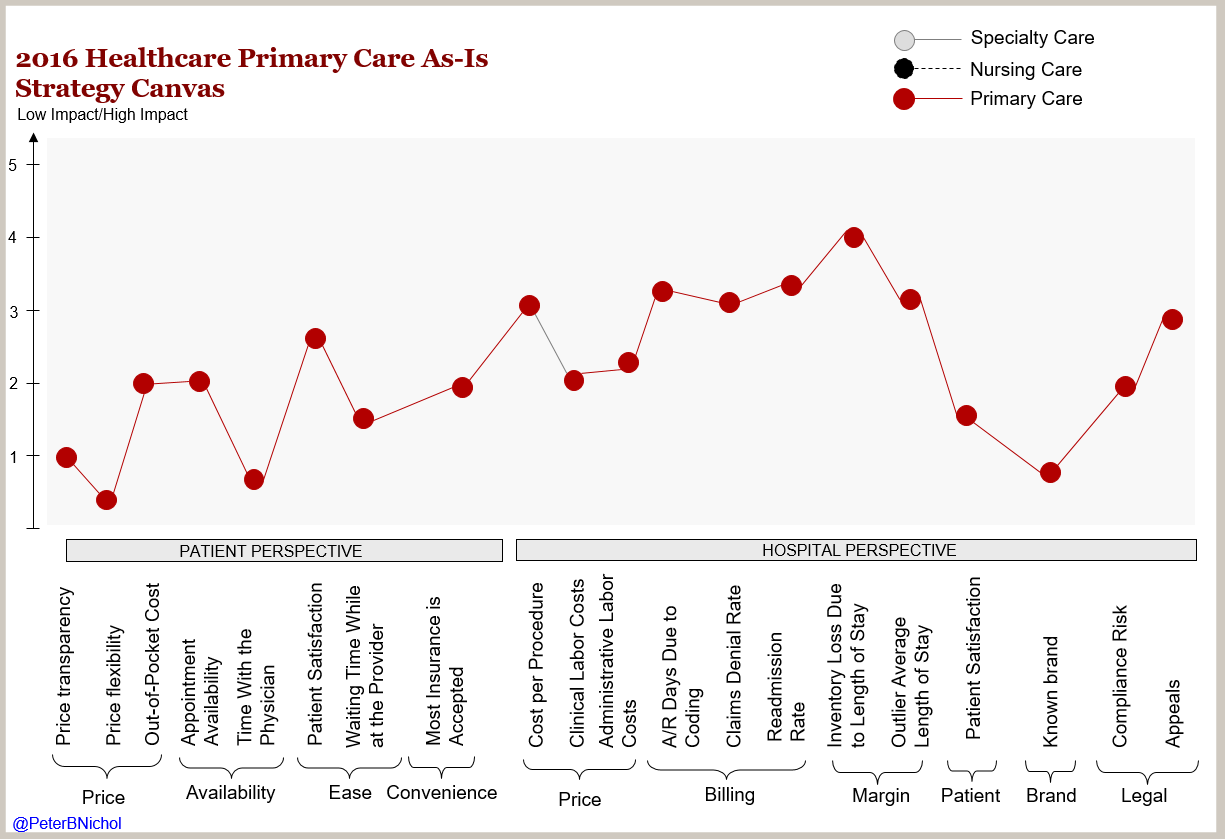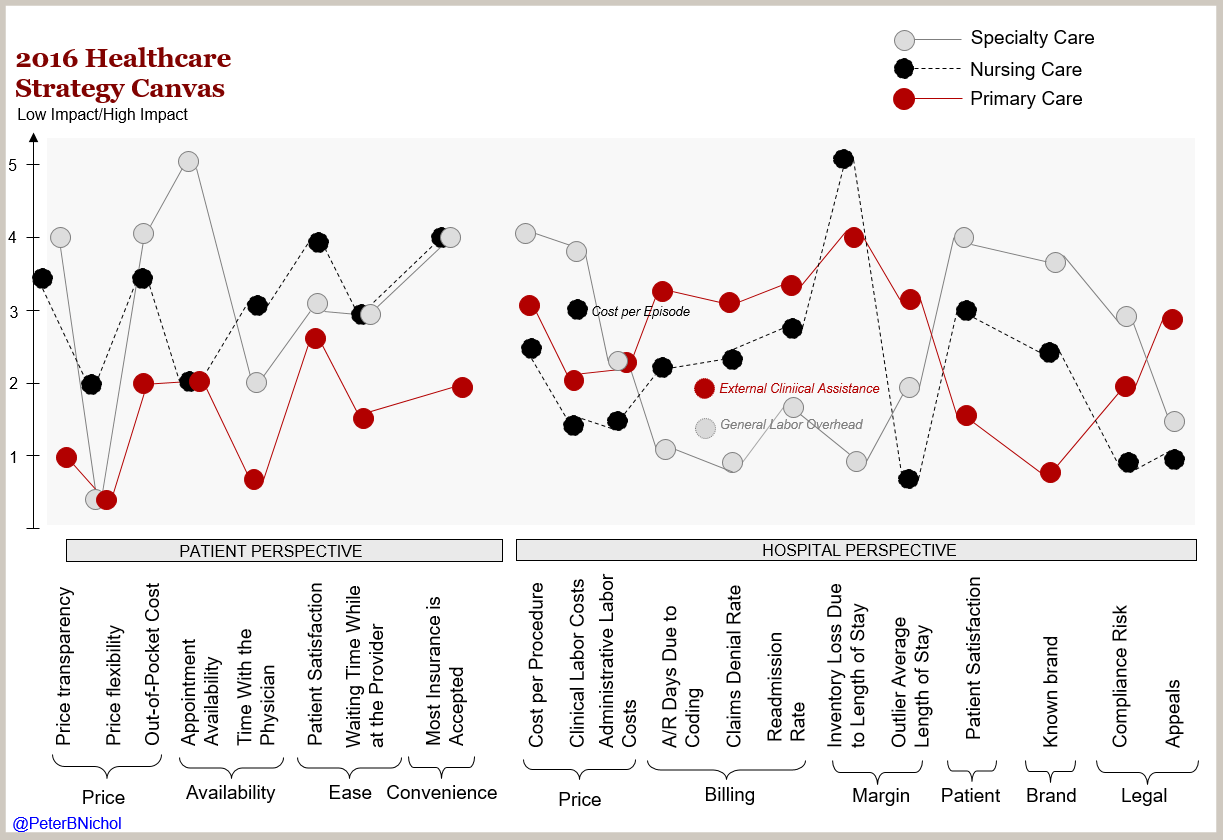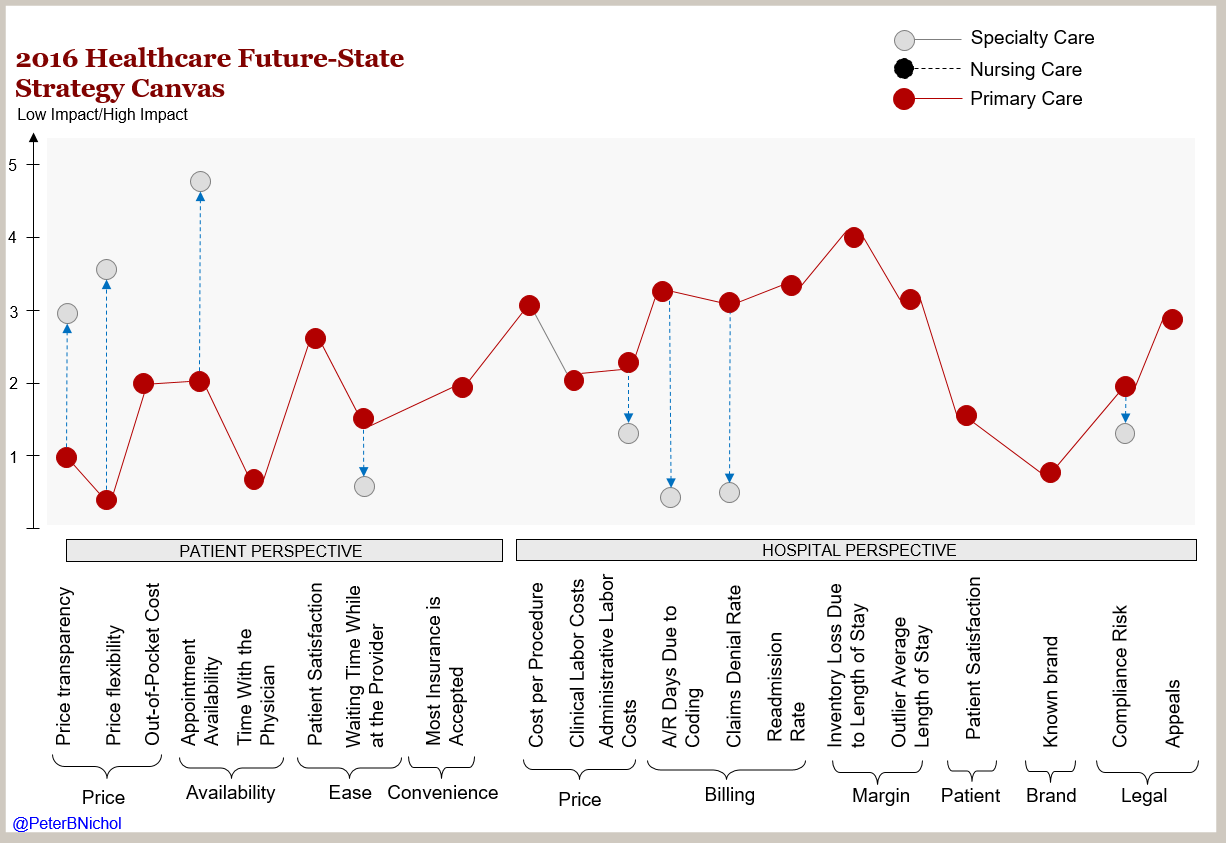Increased commoditization drives leaders to search for uncontested markets with the desire to make the competition irrelevant. Blockchain is creating blue oceans — industries that are not in existence today.
Blockchain can be used for organizational differentiation, by creating new market spaces with unique organizational positions leading to strategic advantages over time. We’ll explore how blockchain can unlock new blue ocean strategies for healthcare.
First, briefly what are blockchains?
In 2008, in response to the global financial crisis of 2007-08, Satoshi Nakamoto wrote a paper titled “Bitcoin: A Peer-to-Peer Electronic Cash System.” The paper suggested that “trusted third parties” could be eliminated from financial transactions using blockchain technologies. Blockchain makes it possible, for the first time in history, to remove — or disintermediate — the middleman from business transactions, and by doing so improves the value of existing products, services and interactions.
Value innovation for healthcare
The book Blue Ocean Strategy, by W. Chan Kim and Renée Mauborgne, introduces the term value innovation, focused on making the competition irrelevant through the creation of new leaps in value. Value innovation is uncovered when companies align innovation with utility, price and cost positions. The result has the potential to create uncontested market spaces, or “blue oceans.”
The authors of Blue Ocean Strategy evaluated 108 companies and found that 86 were product line extensions that accounted for 62 percent of total revenues and 39 percent of total profits. In contrast, the other 14 percent of companies, focused on blue ocean strategies and accounted for 38 percent of total revenues and 61 percent of total profits. Blue ocean strategies pay off. They can also pay off for healthcare. Blue Ocean Strategy was first published in 2005. However, this discussion will also include the more recently expanded 2015 edition.
Creating blue oceans
Using the framework for building a compelling blue ocean strategy, we will apply the Blue Ocean Strategy Canvas to healthcare across three areas:
- Where the competition is investing.
- Factors on which the industry currently competes on products, services and interactions.
- What patients receive for a standard market offering.
Through this visual diagnostic, I’ll present a graphical picture showing the strategy canvas for the as-is state of primary care, the healthcare industry, and the future state of healthcare with a twist. Based on this as-is state, we’ll extend this strategy canvas to show the future state in value-based blockchain world.
Strategy canvas for healthcare
The action framework initially helps to define the as-is state foundation for building a blue ocean strategy. It also provides clarity on where competitors are investing today and how patients receive (or don’t receive) value from healthcare providers. Let’s brainstorm the factors upon which the healthcare industry completes and invests. Using these levers may also increase efficiency and tune performance.
Hospital perspective
- Cost per procedure: Is the procedure costing more or less compared to other similar procedures?
- Clinical labor costs: What is the clinical cost per discharge?
- Administrative labor costs: What is the overall nonclinical cost per discharge?
- A/R days due to coding: How long does it take to code and submit a claim?
- Claims denial rate: Are claims rejected for inaccurate information?
- Readmission rate: Does the patient come back for the same reason as the initial visit?
- Inventory loss due to expiration: Is waste impacting operational margins?
- Outlier average length of stay: Is quality impacting reimbursement?
- Patient satisfaction: Is treatment quality impacting brand?
- Brand: Is the brand of the provider known?
- Compliance risk: Is the documentation trail neat?
- Appeals: Is clinical and nonclinical information accessible for legal appeals?
Patient perspective
- Price transparency: Does the patient understand the value for the cost?
- Price flexibility: Does the patient have price alternatives?
- Out-of-pocket costs: How much will this cost the patient?
- Appointment availability: Is the doctor available?
- Time with physicians: Does the patient have time to ask questions?
- Patient satisfaction: Is treatment quality impacting brand?
- Waiting time at the provider: Is the patient waiting?
- Most insurance accepted: Is the patient covered?
The 2016 Healthcare Primary Care As-Is Strategy Canvas provides an impressive view. This chart offers a graphical illustration where primary care is leading and where it’s lagging, observed from the perspective of the patient and the hospital.
Broadening the scope to include specialty care, nursing care, and primary care offers new insights into how patients and hospitals define value.
The four actions framework
Value innovation is not the same as technology innovation. Ultimately a technology to attract the masses must make consumers’ — or, in our case, patients’ — lives, more convenient, more straightforward or more fun.
The four actions framework works to break the trade-off between differentiation and low cost. Red oceans strategies focus on either differentiation or low cost, whereas blue ocean strategies concentrate on both. Let’s review the four actions briefly.
- Eliminate: Remove factors from industry standards.
- Reduce: Move factors below industry standards.
- Create: Generate factors new to industry standard.
- Raise: Move factors above industry standards.
This exercise helps to identify where to remove waste, reduce redundant processes, discover new value and amplify embryonic value. Focusing only on primary care, where could we refocus our energy?
Eliminate
- None
Reduce
- Waiting time at the provider
- Administrative labor costs
- A/R days due to coding
- Claims denial rate
- Compliance risk
Create
- Truth, not trust
- Appointment flexibility
Raise
- Price flexibility
Creating a blue ocean strategy for healthcare is less about what patients need and more about what patients don’t need. It’s about eliminating waste and removing what is not necessary or required for a healthcare interaction.
By filtering our chart to only include primary care, we can model where value can be extended and renewed — exploring blue oceans.
Blockchain and blue ocean strategies
Healthcare is riddled with challenges and non-value-add processes. How can blockchain add value? The goal is adding value innovation, not technologyinnovation; we saw how that worked out for Motorola. Apple appears to be doing fine with the iPhone selling more than 230 million units that accounted for 66 percent of it FY 2015 revenues, $233.7 billion.
While value innovation is not the same as a technology innovation, technology innovation does have a value that can enable the discovery of blue ocean strategies. Using our healthcare strategy canvas and the four actions framework, we can identify areas ripe for blue ocean strategies that can benefit from blockchain technologies.
- Waiting time at the provider (reduce): Complex registration processes, repetitive registration processes create patient and provider friction. Using blockchain distributed patient registries (ledger) can reduce patient intake time.
- Administrative labor costs (reduce): Less paperwork to fill out at the provider location, results in less administrative staff required to process the paperwork; therefore, reducing overhead costs.
- A/R days due to coding (reduce): Providers will update health events in a blockchain type ledger that will enable other healthcare delivery entities (payers, third-party healthcare providers, labs) to access the same information reducing cycle time for coding and recoding due to errors.
- Claims denial rate (reduce): A distributed healthcare system registry (ledger) could house claims, decreasing errors due to manual entry or rekey errors.
- Compliance risk (reduce): Transparency of claim activity and the universal health event registry (ledger) will allow auditors to swim through claims from the beginning to the end, decreasing compliance risk and cost.
- Truth, not trust (create): We trust third parties, such as hospitals and urgent care facilities, to protect patient records. Tomorrow, a distributed patient registry (ledger) may house patient and claim information, improving transparency for claim processing and payment.
- Appointment availability (create): When an appointment is needed, a patient calls a provider and attempts to schedule one. There are typically several back-and-forth interactions before a date and time are set. Why? Often multiple services area required — for example, an annual physical that also requires lab work. A universal health appointment registry (ledger) could help align hundreds of schedules without requiring any single health care delivery system to own the health appointment registry (ledger).
- Price flexibility (raise): With the blockchain distributed patient registries (ledger), claims information would be available from providers through a distributed network. Do you wonder what the average price for a procedure is in your town, for your age, or at a few specific provider locations? That question can be answered.
Repetitive registration processes and the requirement for multiple signatures on duplicate forms is a waste of time for patients and providers. We need blue ocean strategies in healthcare — discovering uncontested market spaces from a blockchain mindset.
Peter B. Nichol, empowers organizations to think different for different results. You can follow Peter on Twitter or his personal blog Leaders Need Pancakes or CIO.com. Peter can be reached at pnichol [dot] spamarrest.com.



